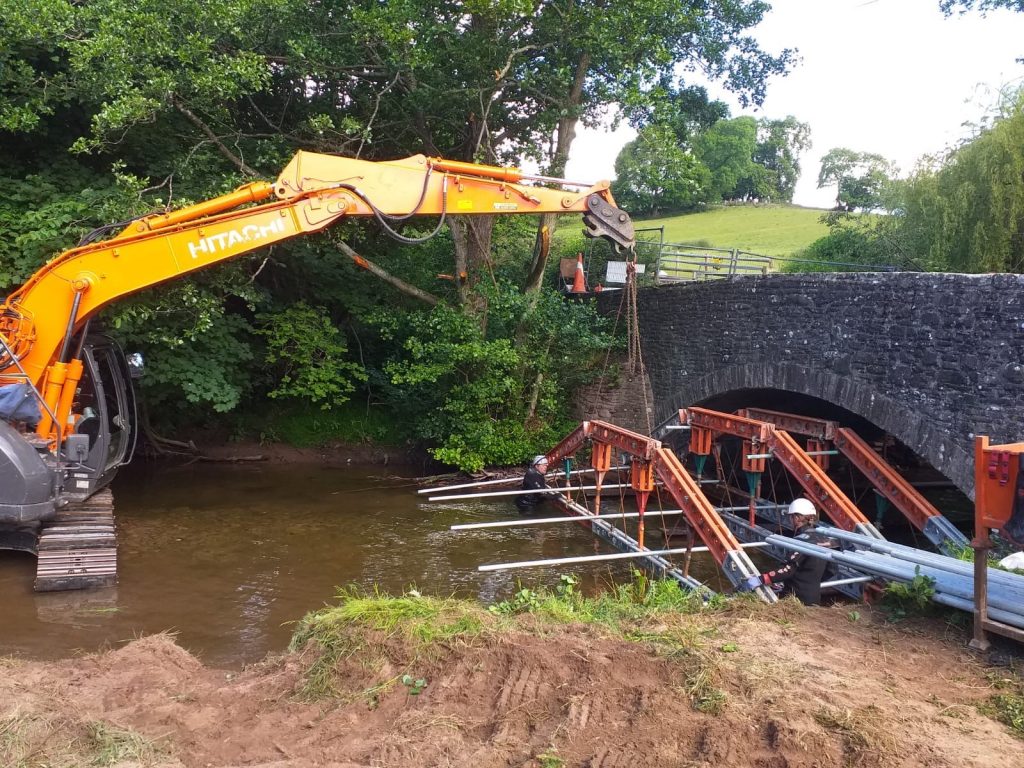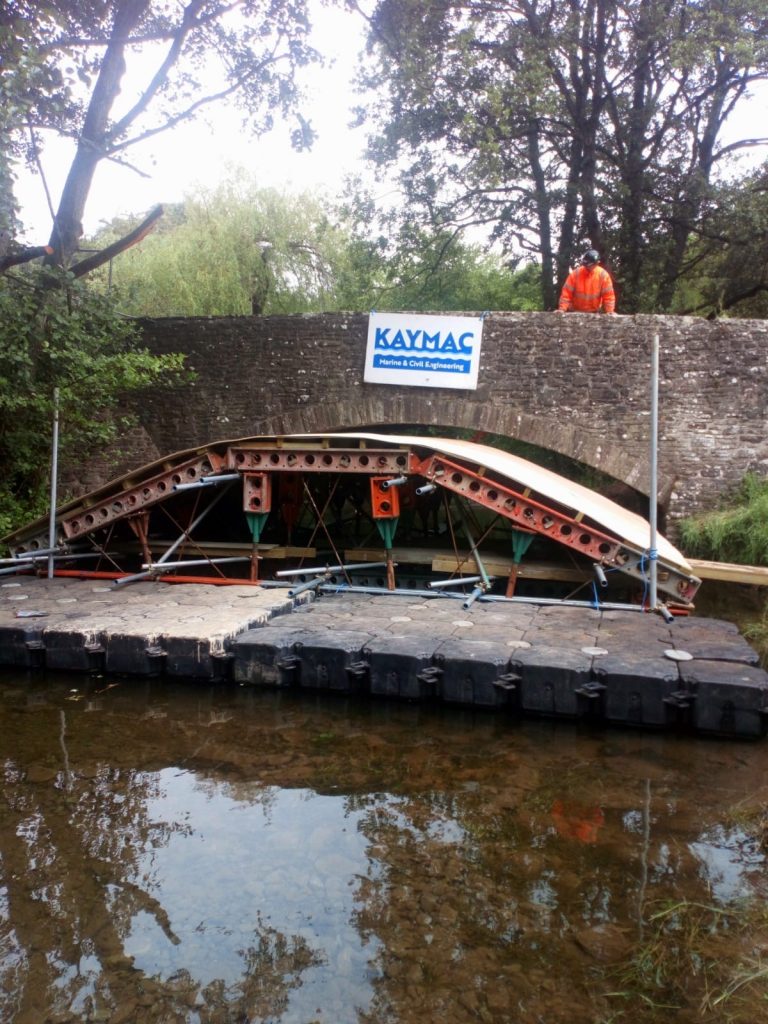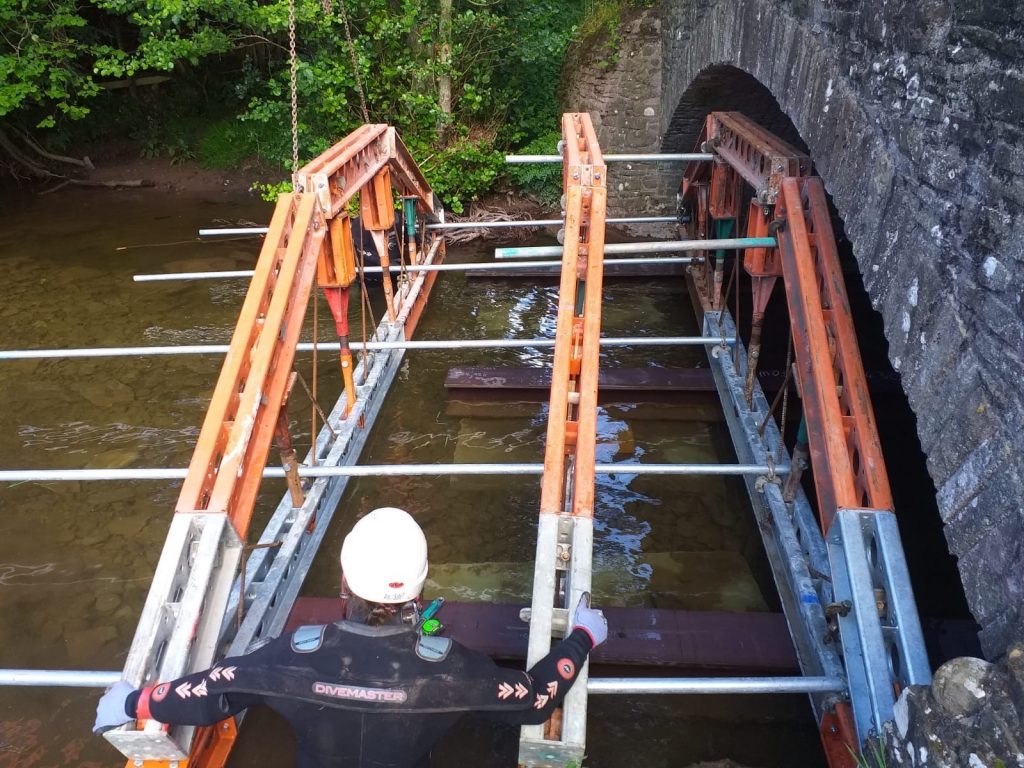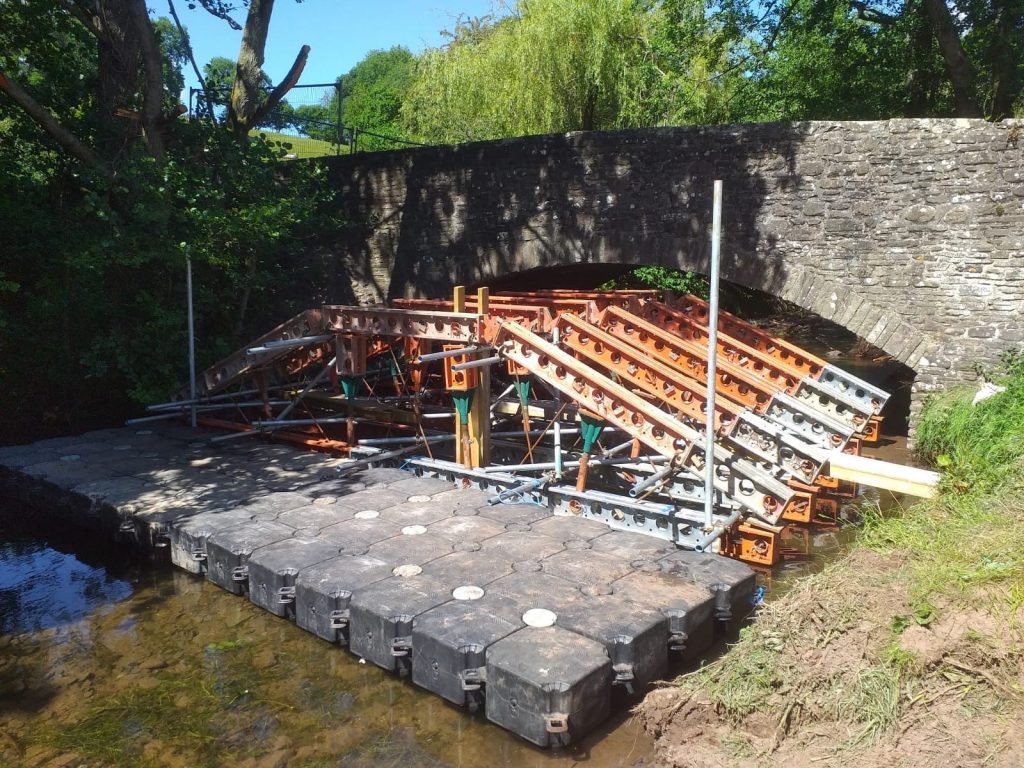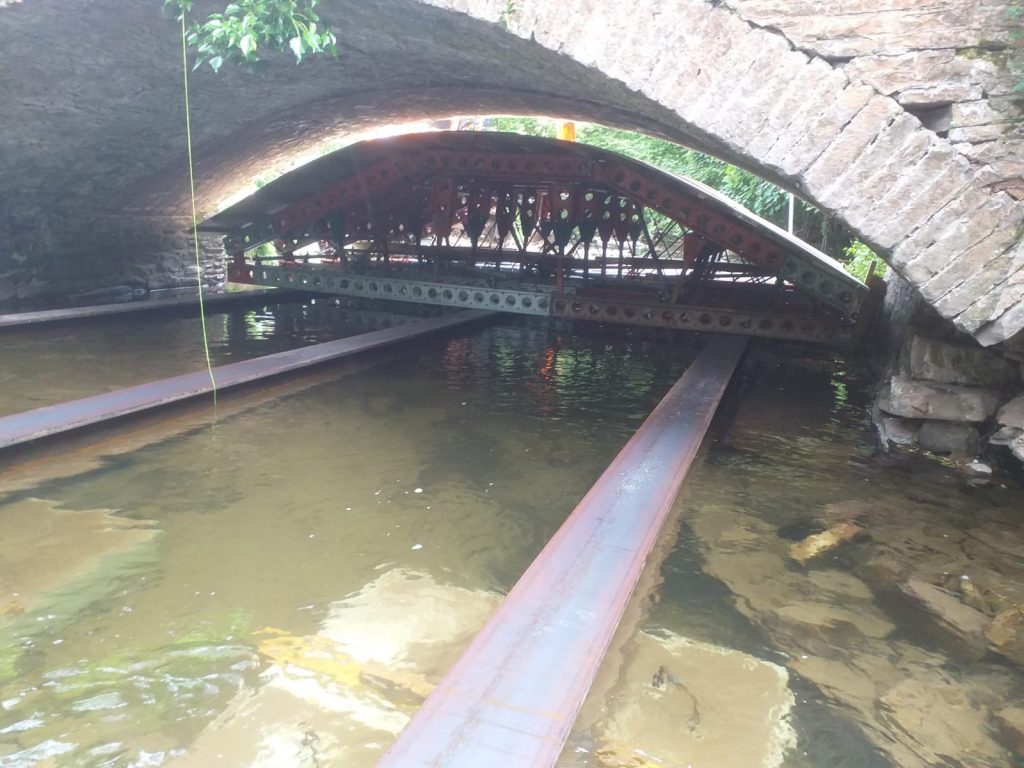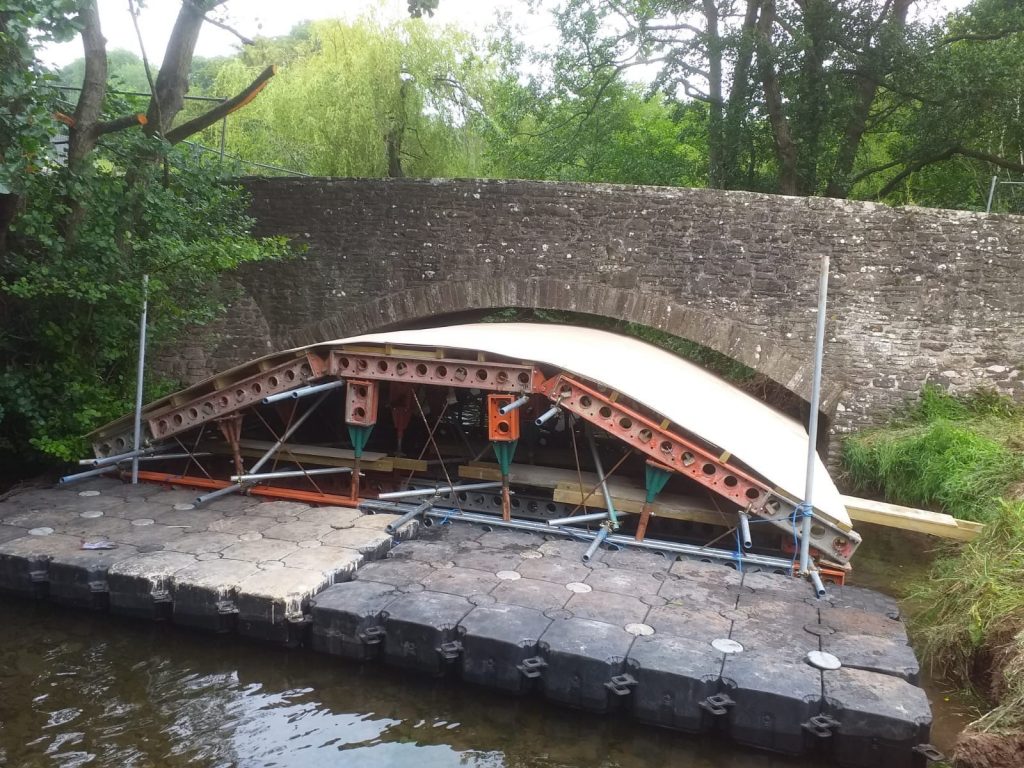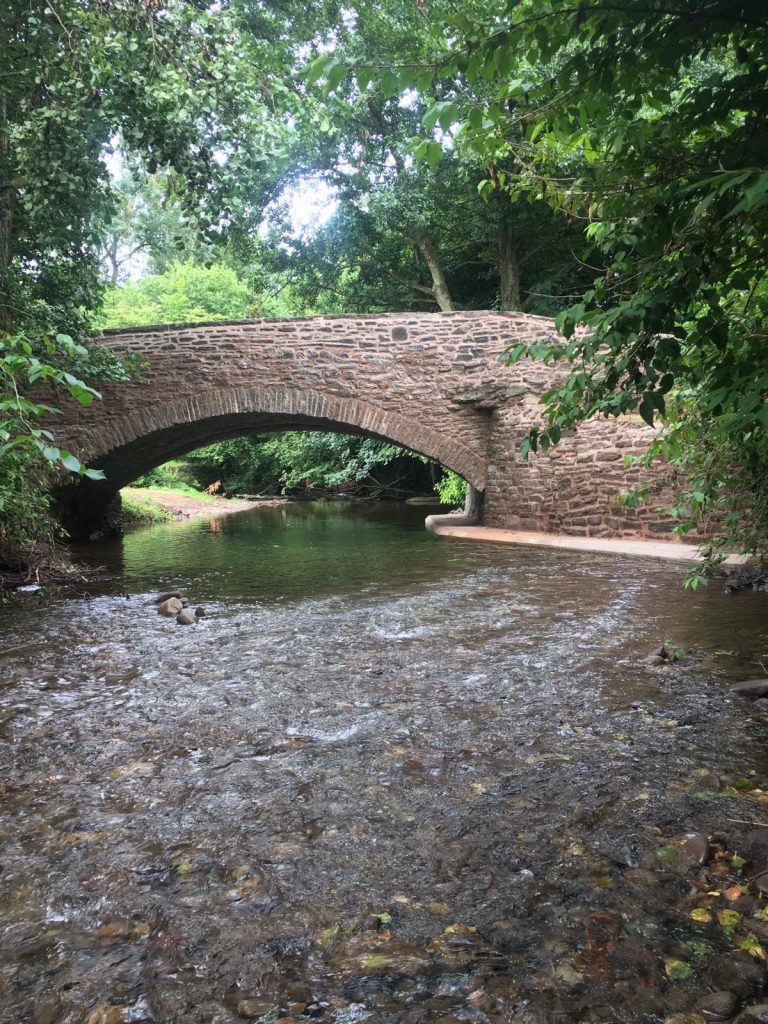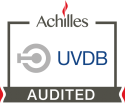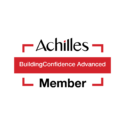Escob West Bridge
The Grade II listed structure at Escob West was a structure ear marked for demolition before Kaymac were given another great opportunity to showcase our innovative approach to solving complex in-water engineering problems.
Due to the lack of structural stability, all parties were of the opinion that operative access beneath the structure to undertake any remedial works would not be safe. The extent of the flood damage to the structure’s abutment was so extreme that it was clearly visible from the opposite river bank, with the arch being almost unsupported for over 50% of the abutment length. The asset owner immediately closed all vehicular and pedestrian use of the bridge.
Kaymac were originally invited to develop a safe method for demolishing and reconstructing the bridge. Not being content with this approach and being confident that we could offer an innovative solution to the client, our engineers began brainstorming possible solutions and determined that through careful control of the watercourse, a temporary composite propping system could be floated beneath the structure without the need for any operatives to be put at risk during it’s installation. The solution would also allow water to pass through the structure if future flooding events were to occur during the planned repair programme.
The solution would require temporary RC bases capable of withstanding the bearing pressures exerted by the propping system, being installed upstream and downstream of the structure. We consulted with our suppliers, namely RMD Kwikform and Pebble Engineering Ltd to confirm that our proposal would satisfy a detailed design, before presenting our proposal to the client. Through a stringent interview process, the proposal details were questioned and checked so that the client could satisfy themselves that the approach could not only stabilise the structure but also offer a value engineering solution, with substantial savings compared to the original demolition and reconstruction option.
Upon being awarded the works, Kaymac carried out all of the necessary steps in line with our Temporary Works Management Policy to ensure that a detailed and rigorous design was undertaken.
The method of constructing and positioning the RC bases, floating the temporary propping system beneath the bridge and essentially using hydraulic jacks to raise the whole system to ensure continuous contact of the temporary works with the existing structure was achieved to ensure that under no circumstances, operatives were required to work beneath the structure and risk being injured through structural collapse during the temporary works installation.
The work was planned through close consultation with Natural Resources Wales, the Heritage & Conservation Dept. of the Brecon Beacons National Park Authority and our client. With the structure being situated within the Brecon Beacons National Park and within a watercourse known to be frequented by various marine life and small mammals, Kaymac needed to ensure that the works could be undertaken with no detriment to the local eco-system. Environmental measures including conservational surveys, fish rescues, the use of silt curtains to encapsulate the works, using specific in-water environmentally sensitive concrete admixtures and ensuring all plant near to the watercourse would be fitted with bio-degradable hydraulic oils were undertaken on site.
BRIDGE REPAIR DETAILS
Upon the successful installation of the temporary propping system, a detailed survey of the damaged abutment could be safely undertaken by Kaymac. Being a Grade II listed structure, Kaymac liaised with the local Heritage & Conservation Dept. of the Brecon Beacons National Park Authority to develop a suitable repair method that would not only stabilise the structure but also maintain the historic complexion of the bridge. It was agreed that a composite repair entailing in-situ concrete and masonry would be adopted in this instance. Kaymac’s commercial divers safely removed the misplaced masonry from the river bed before erecting framework to encapsulate the repair area. The concrete was installed in 3 vertical lifts from the invert to the arch springing and offset horizontally from the face of the existing abutment so that the recovered masonry could be reinstalled and tied in with the existing details. Once the structure had been stabilised and the concrete test cubes proven to be in excess of the required design strength, the framework was dis-assembled. The temporary propping system was then safely removed to allow the safe inspection of the arch barrel and other structural elements of the bridge. Following the successful completion of the works and subsequent removal of the temporary propping system, the bridge was re-opened to the public.
